When we experiment with AC power. We always use a power transformer as the source but it cannot adjust voltage though it has an adjustable form but them too expensive. This AC variable power supply project so may a good way for us.
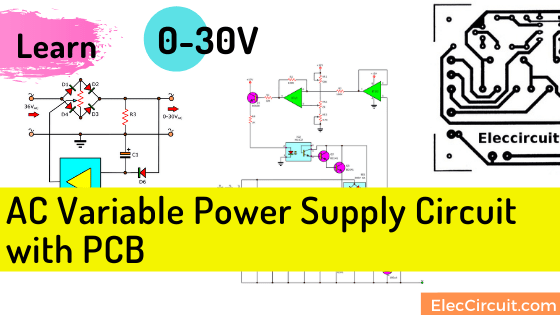
This circuit that applies the output of 0-30V at 3A by using electronic components are bridge diode as main and control voltage by potentiometer easily. If you need AC Power supply is cheaper this project is a good way.
Main idea from bridge circuit
We can adjust AC voltage with feature of Balanced bridge circuit as Figure 1. When we adjust a resistance between bride diode will can control the output voltage.
From this principle can use resistance between junction of transistor instead variable resistor. Then another transistor to control resistor between junction of the transistor. That resistance such adjustable by controlling to bias to transistor.
The working principle
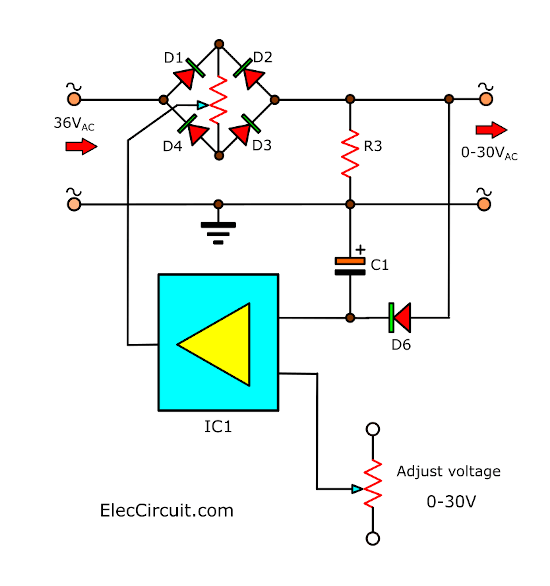
In Figure 1 a bridge circuit have feature that if we connects the variable resistor between bridge.
This resistor will control voltage at output. If low resistance will cause output current flow and voltage a lot. But if higher resistance cause current lower to least. So we use this principle for our project.
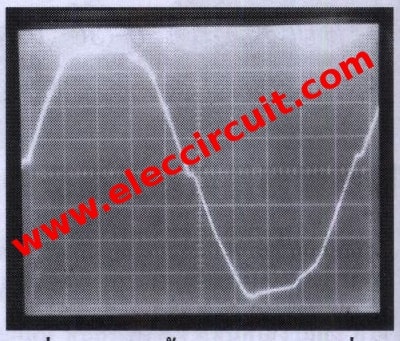
On working of the diode in practice. Be seen in forward bias When diode conducts current to a voltage drop across 0.7volts. Cause the loss at voltage in sinewaveform is lower than 0.7 volts. Diode still does not work And will lose again The voltage was decreased down to less than 0.7 volts. Diode stops working before making a sine wave at output have cross over distortion as Figure 2.
In Figure 1 will take the BD1-bridge diode to connects with ACV 36 volts at input. And then have variable resistor connected in as load of bridge diode circuit. Which next this potentiometer will be replaced with 2 transistors as described above.
A resisistor-R3 acts as full circuit. D6 and C1 are rectifier and filter voltage to provide power to IC1. Which it function like voltage comparator of rectifier and reference voltage at between 0-30 volts. Comparison results applied to control resistance. Which when replaced by transistors, the output of comparator circuit is used to control the bias of the transistor.
The working principle
Figure 3 is a complete circuit of adjustable AC power supply. The BD1 is bridge diode and transistors Q2, Q3 are connected in darlington compound to control flowing current.
The AC variable power supply circuit diagram
In controlling we will take output signal to compare with reference voltage to control both Q2, Q3 next step.
The working of circuit begin with R9 will acts as an inside load. To cause full circuit. D1 is rectifier to convert AC to DC and C1 is will smooth or filter voltage to steady direct current. The DC-voltage will be high voltage of 50 volts. R5 and ZD1 are connected to control DCV from 50volts lower to about 33 volts. Then sent to Q4-transistor which acts as controller this DCV in steady up. C2 is use as high frequency filter to ground.
After that will be sent to IC3-LM7812-DC voltage regulator 12 volts and have C3 as high pass filter to ground. It will also have some voltage is feedback to Q4-transistor to improve stability of the circuit.
This DC 12volts will be entered to IC1 and Q1-transistor. It also to a voltage divider set AV1-AV3 to as reference voltage fot compare voltage at output of IC1/2 at comparator circuit IC1/1.
D2 is rectifier AC to DC by have C4 is filter DC voltage that lower ripple. Then it through the voltage divider (R7 and R8). Which they will divide voltage drop across a Meter and use as voltage to compare with voltage at IC1/2.
The circuit as voltage indicator include VR4 and moving coil meter-M1 is an amps meter size 100 uA. VR4 will acts control current through M1.
The DC voltage from R8 will be entered to pin 3 of IC1/2 by IC1/2 is buffer. R3 acts as coupling a signal that sends to the comparator circuit between the reference voltage and output voltage output to IC1/2.
The comparator have R2 serves as set gain ratio of IC, output signal of IC1/2 will through R1 to bias to transistor Q1 to control the brightness of LED inside optocoupler IC2 no. H11D2
The brightness of the LED will control the resistance of the photo-transistor in IC2. The light causes resistance of the photo-transistor lower. Which it is connected to both transistor Q2 and Q3. When photo-transistor with reduced resistance. Will cause current to flow through itself Bias to conduct Q2, Q2 acts as a driver for Q3.
Recommended: How does a SCR thyristor work?
So make Q3 conducts currents, which means that resistance connected between BD1 reduced. The output voltage will reduced and when brightness of LED reduced will cause resistance of photo-transistor increase up, cause Q2 get bias lower. As a result, Q3 is biased less. That is, at which point the resistance increases, the output voltage will be higher. Concluded that when the LED light will stream through the bridge diode is very valuable. Make the output voltage is high, but if a little brighter LED output voltage will drop.
Read Before Build It
I published this circuit as one idea that might be useful for those who are interested. I cannot confirm that this circuit will work perfectly properly. Since I haven’t tried building it myself. So if you want to experiment with building it. You should use more caution than usual.
Builds AC variable power supply
First, get the components ready.
The components list
Resistors 0.25watts +-5%
R1, R5: 22K
R2, R3: 100K
R4: 1K
R6: 22K
R7: 47K
R8: 39K
R9: 100 ohms 10 W
VR1: Variable Resistors 50K
VR2: Potentiometer (B) 2K
VR3: Variable Resistors 4.7K
VR4: Potentiometer 1M
Capacitors
C1: 220uF 100V Electrolytic
C2: 0.33uF 50V Mylar
C3: 0.01uF 50V Mylar
C4: 10uF 63V Electrolytic
Semiconductors
BD1– Bridge Rectifier, 220V 6 Amp = 1 pcs.
D1, D2, D3: 1N4001, 1A 50V Diode = 3 pcs.
IC1: TLC272, Dual Single Supply Operational Amplifier = 1 pcs.
IC2: H11D2, High Voltage Phototransistor Optocouplers = 1 pcs.
IC3: LM7812, 12V regulator IC = 1 pcs.
LED1: LED as you need = 1 pcs.
Q1: BC550B, 40V 0.1A NPN transistor = 1 pcs.
Q2: BC141, 60V 1A NPN Transistor, TO-39 = 1 pcs.
Q3, Q4: BD241C, 45V 3A NPN Transistor, TO-220 = 2 pcs.
ZD1—-Zener Diode, 33V 1W = 1 pcs.
Others
F1: Fuse 1 Amps = 1 pcs.
F2: Fuse 2 Amps = 1 pcs.
M1: Meter 100 uA = 1 pcs.
T1: Transformer Pri: 220 volts ; Sec: 36 volts 3 Amp = 1 pcs.
We need to provides all components as list above. Then, make PCB. See actual-size of single-sided copper PCB layout. And Component layout for the PCB.
PCB layout
Note: This project has a lot of parts and high current, You need to have enough electronic experience.
Q1, Q3, and IC3 need to use a heatsink. And the importance of Q4-BD241C must mount large heatsink size.
Testing and tuning
Check the accuracy of the circuit again to make sure, before you experiment to enter input voltage.
If a short circuit will damage the machine. Adjust VR2 is used to adjust the voltage to the lowest position. To connects AC 36 volts from the transformer to input.
Then, use the meter to measure the voltage of the output switch. Pressure must not exceed 0.5 volts. If too much, to hurry off. And check the equipment again.
When sure that everything is normal, adjust to the next step,VR2 was adjusted to increase or decrease the output voltage switch, to adjust a minimum of 0.5 volts and a maximum of 30 volts.
Next, adjust the meter is used to switch the output voltage can be read correctly. To change the scale of the meter before 100 microamps to 30 volts. Then start adjusting the meter by adjusting VR4 to the highest position, set the multimeter to measure AC voltage at the output.
Then turn it on, adjust VR1 to the minimum resistance, adjust VR1 to the top position. VR3 adjusts the output meter reads 30 volts without having to do the voltage shown on the meter of the machine.
Then adjust VR1 VR2 to adjust the minimum position potentiometer output voltage is 0 volts.
Then adjust VR2 to the top position again. The voltage reading is 30 volts. Then adjust VR4 for the meter reading on the meter is connected directly to the output. shall be available
Application
We can apply the work to be associated with voltage switch it. Which may be used in place of a transformer Or used as a power source in the experimental circuit on AC power.
Caution is not the output short circuit. This will result in very high current flows through transistor Q3 will make this waste.
When not in use, turn off the machine. Because within the 100 ohms load at all times to cycle to work. Therefore, the consumption of electric power to the load in vain.
We may be used to connect an external diode bridge another time. To change the AC voltage to DC power. It gives us the power source for both AC and DC power to operate simultaneously.
GET UPDATE VIA EMAIL
I always try to make Electronics Learning Easy.

I love electronics. I have been learning about them through creating simple electronic circuits or small projects. And now I am also having my children do the same. Nevertheless, I hope you found the experiences we shared on this site useful and fulfilling.
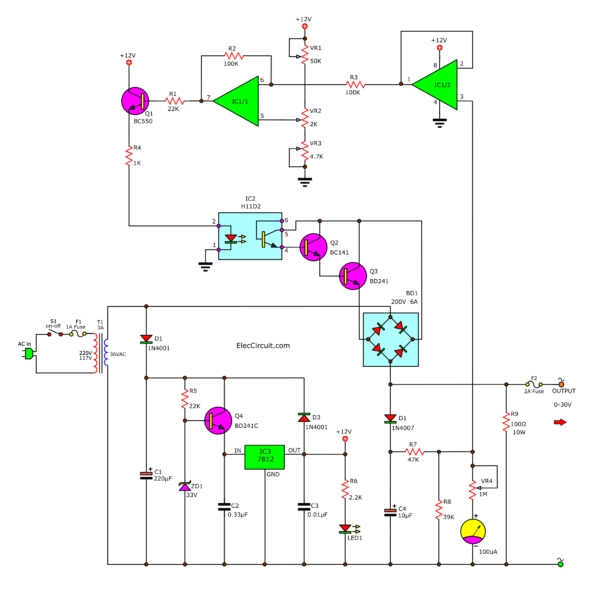
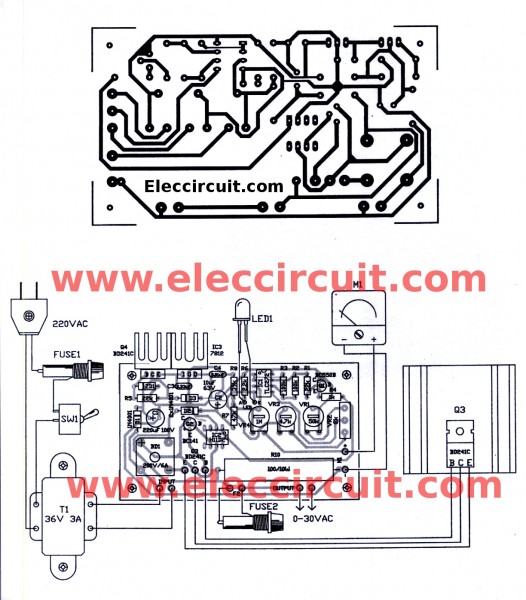
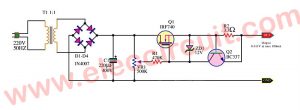
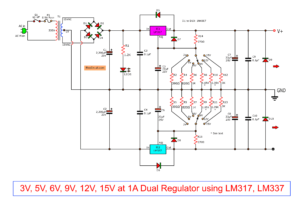
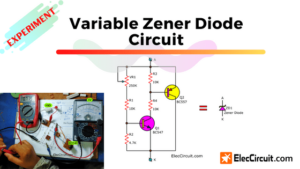
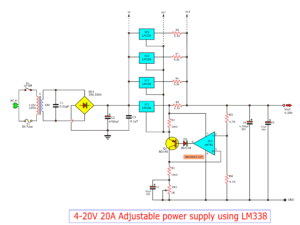
Could you tell me if the microamper meter has to be one of altern or direct current?
Thank you very much,
Juan
hi, i really want to make this project but i can’t find a shop where i can buy H11D2, is there any alternative IC that component.. thank you.
Hi Friend!
May I have Gerber file for AC variable power supply, 0-30V 3A?
Thank you so much.
Hello Le Dinh
Thanks for your visit. I am sorry. Now I do not have a Gerber PCB of this circuit.
Look at Figure 1. Do you think the bridge orientation is correct? I don’t think so, so edit it and rotate it 90 degrees.
The scheme is dissipative. The adjustment is linear and the efficiency is poor. Better rethink it and add a PWM modulator with MOSFET switcher, with a correctly calculated snubber. As an idea, it’s ok, but it has bugs on its head. : P
Hello Ytron,
Thanks for your visit to my site. You are correct.
Your idea is awesome, unfortunately not that tested right now. However, if I’m free. I will test it, again
Thank you very much.
Have a good day.